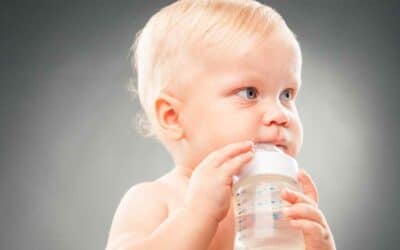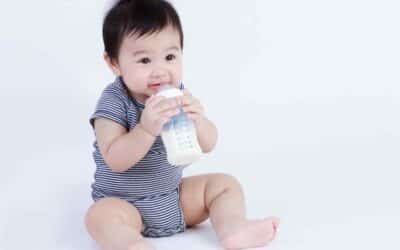Going on a travel with a baby can be an adventure filled with joy and excitement, but it can also present unique challenges, especially when it comes to feeding. If your little one relies on baby formula, you may find yourself overwhelmed by questions and concerns. How do you pack the formula efficiently? What are the rules about taking it through airport security? How do you prepare it on the go?
Whether you’re planning a short road trip or an international flight, this guide is designed to ease your worries and equip you with the knowledge you need on how to travel with baby formula. From understanding different types of baby formula to navigating time zones and feeding schedules, we’ll explore everything you need to know about traveling with baby formula.
Join us on this journey as we ensure that the tiniest tummies are well-fed and content, even miles away from home. Your family’s next travel adventure doesn’t have to be a daunting task; with the right preparation and insights, you can make it a smooth and enjoyable experience for everyone involved. So, buckle up and get ready to explore the world of travel with baby formula!
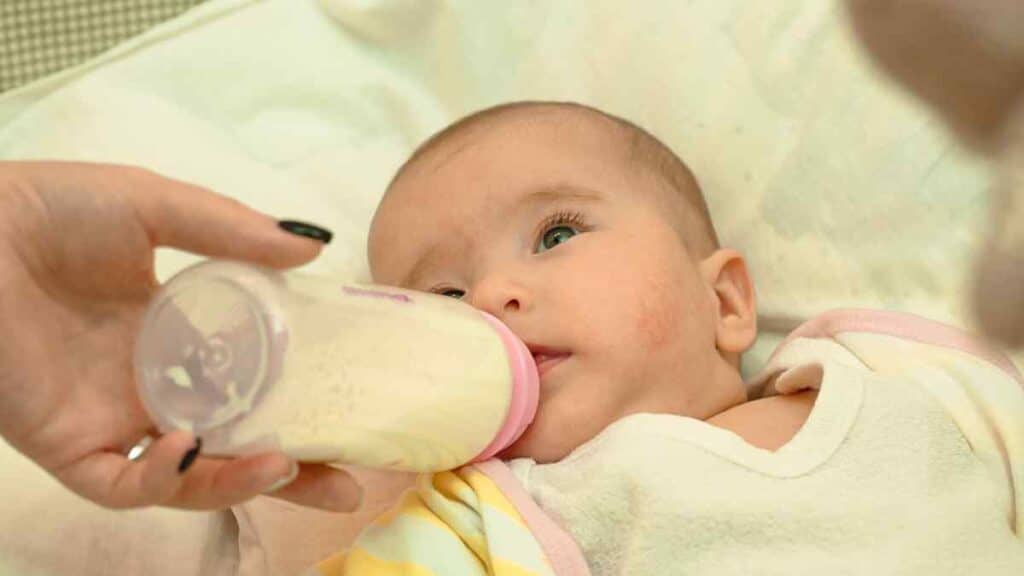
Selecting the Right Formula
When it comes to preparing infant formula while traveling, making the right choices is paramount. Ensuring your infant’s nutrition remains uncompromised on the road involves selecting the appropriate infant formula, considering their feeding stage, and packing enough for the journey. Let’s break down these essential elements.
Choosing a Formula Suitable for Travel
Selecting the right infant formula is the foundation of safe travels. Opt for powdered infant formula whenever possible. It’s not only convenient but also safer to transport than prepared formula. Powdered formula is less prone to bacterial growth and can be easily measured and mixed as needed.
Remember, breast milk remains the gold standard for infant nutrition, but if you rely on formula, ensure it’s suitable for your baby’s age and dietary needs. Always follow the manufacturer’s instructions for preparation and use.
Considerations for Different Feeding Stages
Infants go through distinct feeding stages, each with its unique preparation and requirements. It’s essential to match the infant formula with your baby’s age and developmental stage. Consult with your pediatrician to choose the right infant formula for your child. Some infants might have specific dietary needs or allergies, so tailored formulas are available to address these concerns.
Packing Sufficient Formula for the Trip
Running out of infant formula mid-travel can be a stressful experience for both you and your baby. To avoid this, pack more than you think you’ll need. It’s better to have extra formula than to be caught unprepared.
When you prepare infant formula for your travel, it’s best to pack enough infant formula powder for the entire trip in a clean, dry container. Use translucent bottles to pre-measure the right amount of powder for each feeding. If you’re uncertain about water quality at your destination, consider bringing bottled water or sterilizing tap water.
When it comes to bottle feeding sessions during transit, plan for at least one extra feeding, just in case of delays. And don’t forget to pack a few sterile bottles to ensure you have enough to rotate throughout the journey when feeding infants during travel.

Understanding Baby Formula: Essential Nourishment for Little Ones
Baby formula serves as a crucial source of nutrition for infants who cannot be breastfed or need supplemental feeding. It is a specially designed breast milk substitute that aims to provide essential nutrients necessary for a baby’s growth and development. While breast milk is undoubtedly ideal, formula becomes a lifeline for parents who can’t breastfeed due to various reasons. The nutritional composition of baby formula is crafted to mimic breast milk’s goodness, ensuring that babies receive the nutrients they need for healthy development.
Types of Baby Formula for Travel
Powdered Formula
Pros:
- Lightweight and convenient for travel.
- Takes up less space in a carry-on bag, making it easier to pack.
- Can be mixed on the go when needed.
- Long shelf life, which is suitable for longer trips.
Cons:
- Requires clean water for preparation.
- Mixing can be time-consuming.
- Measuring accuracy is essential to maintain proper nutrition.
Concentrated Liquid Formula
Pros:
- Pre-mixed and easy to use.
- Requires less water for preparation.
- Suitable for parents concerned about water quality.
- – Reduces risk of measurement errors compared to powdered formula.
Cons:
- Bulkier and heavier to carry inside a carry-on bag.
- More expensive than powdered formula.
- Limited shelf life after opening.
Ready-to-Use Formula
Pros:
- Requires no mixing or preparation compared to baby food.
- Ideal for short trips or situations without clean water access.
- Convenient and time-saving.
Cons:
- Heaviest and most space-consuming option.
- Expensive and less cost-effective.
- Short shelf life after opening.
Baby Formula and Water Quality
When preparing baby formula, the quality of water used is of utmost importance. While tap water is usually safe for adults, infants have more sensitive immune systems, and their little bodies can’t handle certain contaminants. Purified water, including distilled water, is often recommended for formula preparation. Both are free from harmful substances like minerals and impurities that could be detrimental to a baby’s health.
Parents may wonder about the difference between purified and distilled water. While they are similar, distilled water goes through an additional purification process where it’s vaporized and condensed, leaving behind almost all impurities, including minerals. Either purified or distilled water can be safely used for formula preparation but consult your pediatrician for guidance based on your baby’s specific needs.
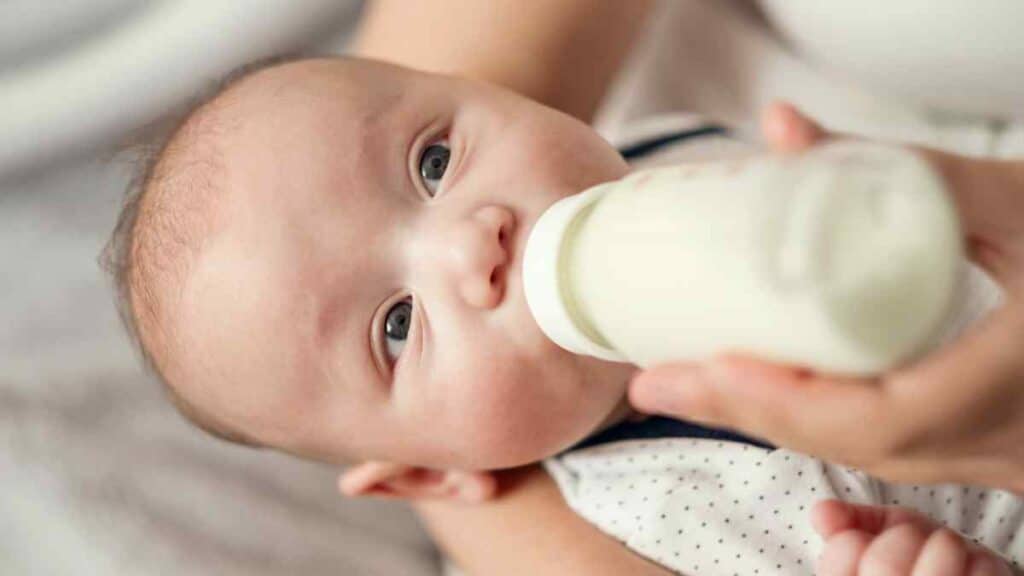
Packing Baby Formula for Travel
Traveling with a baby requires meticulous planning, especially when it comes to ensuring their nutrition. Properly packing baby formula is essential to keep your little one well-fed and happy throughout your journey. Whether you’re embarking on a short road trip or a long flight, here are some tips to make traveling with baby formula a breeze.
Tips for Packing Different Types of Baby Formula
- Powdered Formula Dispensers: For powdered formula, pre-measure individual servings into formula dispensers. This not only saves space but also makes it easier to mix formula on the go. Carry enough for the duration of your trip and a little extra in case of delays.
- Prepared Formula Bottles: If you’re using pre-made formula bottles, pack them in a cooler bag with frozen gel packs to maintain their temperature. Opt for ready-to-feed formula when possible, as it eliminates the need for mixing.
Importance of Keeping Formula at the Right Temperature
Maintaining the proper temperature of baby formula is crucial to prevent bacterial growth and ensure your baby’s safety. Cold formula should be kept cold, and warm formula should be served at the right temperature. Frozen gel packs in a cooler bag can help keep formula cold, while a bottle warmer or insulated container can help warm formula when needed. Always check the temperature before feeding to avoid discomfort or burns.
Necessary Accessories for Traveling with Baby Formula
- Insulated Bottle Bags: These are ideal for keeping prepared formula bottles warm or cold. Look for ones that fit multiple bottles and have adjustable straps for easy carrying.
- Formula Dispensers: These compact containers allow you to pre-measure powdered formula servings, saving space and making formula preparation on the go hassle-free.
- Bottle Warmers: If your baby prefers warm formula over breast milk, a portable bottle warmer can be a game-changer. Some models can be plugged into a car adapter, ensuring you’re always prepared.
- Cooler Bags with Gel Packs: A cooler bag with frozen gel packs is essential for keeping formula cold and safe during your journey.
- Bottle Cleaning Supplies: Carry bottle brushes, dish soap, and a plastic basin to clean bottles between uses. Maintain hygiene to prevent contamination.
- Baby Bottle Sterilizer Bags: These disposable bags can be a convenient way to sterilize bottles using a microwave, ensuring a clean feeding environment for your baby.
Remember, when passing through airport security, baby formula, breast milk, and baby food are considered medically necessary liquids. You can bring them in reasonable quantities exceeding the 3.4-ounce limit for liquids, as long as they undergo additional screening procedures. It’s recommended to declare these items at the security checkpoint to ensure a smooth screening process.
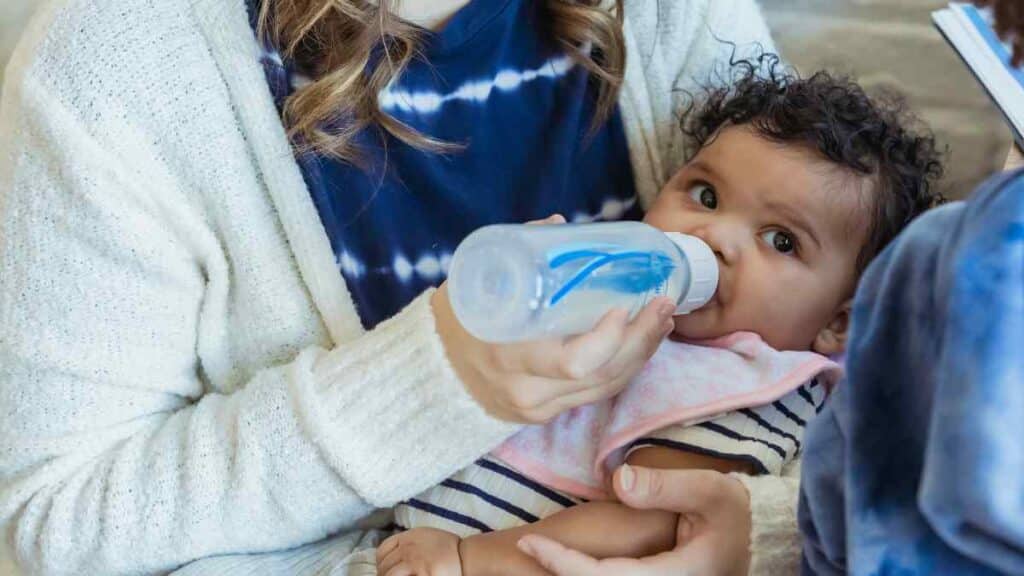
Handling Time Zones and Feeding Schedules
Traveling across time zones with a baby can be a rewarding adventure, but it can also disrupt established feeding schedules. Whether you’re moving ahead or falling behind, here’s how to handle time zones and feeding routines with ease, ensuring your little one’s tummy stays content and happy.
Adapting Baby’s Feeding Schedule Across Time Zones
1. Plan Ahead: Before you travel, try to adjust your baby’s feeding and sleeping schedule by an hour or so each day to align with your destination’s time zone. Gradually shifting the routine can ease the transition for both you and your baby.
2. On-Demand Feeding: While traveling, follow your baby’s cues for feeding. If they seem hungry or fussy, offer breast milk or formula, even if it’s not the usual feeding time. Keep in mind that babies may want to eat more frequently due to the excitement and changes in routine.
3. Stay Flexible: Recognize that your baby’s feeding schedule might be a bit irregular during travel. It’s okay if they eat smaller amounts more frequently or have larger feedings at different intervals.
Handling Jet Lag and Feeding Challenges
1. Gradual Adjustment: Once you reach your destination, continue adjusting your baby’s feeding schedule gradually to match the local time. Spend time outside during daylight hours to help reset their internal clock.
2. Patience with Jet Lag: Understand that it may take a few days for your baby to fully adapt to the new time zone. Be patient and offer comfort as needed during times of restlessness.
3. Nighttime Feedings: If you’re dealing with baby food nighttime feedings during your journey, keep the lights dim and interactions minimal to signal that it’s time to sleep. Over time, your formula-fed baby will learn to differentiate between day and night.
Tips for Traveling with Baby’s Nutrition Essentials
1. Breast Milk and Formula: If you’re bringing breast milk or formula, pack them in your carry-on bag to ensure they’re easily accessible during the journey.
2. Formula Powder Dispensers: If using powdered formula, pre-portion servings in formula dispensers for convenience. Have more than enough for the trip, as unexpected delays might occur.
3. Insulated Bags with Ice Packs: Carry an insulated bag with frozen gel packs to keep breast milk, formula bottles, and baby food cool during travel.
4. Stay Hydrated: For breastfeeding mothers who are bottle feeding their babies, remember to stay hydrated to maintain a healthy milk supply. Pack a reusable water bottle for yourself.
5. Translucent Bottles: When you bring breast milk or formula through airport security, use translucent bottles to make the screening process smoother.
6. Prepare Bottles Ahead: If you’re flying, prepare bottles of baby food, breast milk, liquid filled teethers, or formula before takeoff to avoid turbulence-related spills and make feeding easier during the flight.

Emergency Supplies
Traveling with your bottle-fed baby can be a joyous adventure, full of new experiences and precious moments. However, just like any journey, it’s wise to be prepared for the unexpected. In this column, we’ll delve into the essential emergency supplies every parent should have on hand to ensure the safety and well-being of both baby and themselves during their travels.
A. Basic First-Aid Kit for Both Baby and Parents
Accidents can happen anywhere, and when you’re on the go with your baby, having a basic first-aid kit is paramount. Your kit should include items such as:
- Adhesive bandages in various sizes
- Antiseptic wipes
- Baby-safe pain relievers
- Digital thermometer
- Tweezers
- Scissors
- zip lock bags
- Bottled water
- Bottle warmer
- Warm baby milk
- A small supply of any essential medications your baby may need
Remember to tailor the kit to your baby’s specific needs and include any items recommended by your healthcare provider.
B. Contact Information for Healthcare Providers
Before embarking on your journey, ensure you have the contact information for your baby’s healthcare provider readily available. As an on-the-go parent, it’s important to save their office number, an after-hours emergency line, and any relevant email addresses. In case of a health concern while traveling, you’ll have quick access to professional advice.
C. Baby’s Medical Information and Insurance Cards
It’s a good practice to carry a copy of your baby’s medical records with you, especially if you’re traveling far from home. Include information about vaccinations, allergies, and any underlying medical conditions. Additionally, ensure you have your baby’s health insurance cards on hand in case of unexpected medical expenses.
While it may seem like over-preparation, these emergency supplies can make a world of difference when you’re traveling with your bottle-fed baby. They provide peace of mind, knowing that you’re equipped to handle unexpected situations and can provide the best care for your little one, no matter where your travels take you.
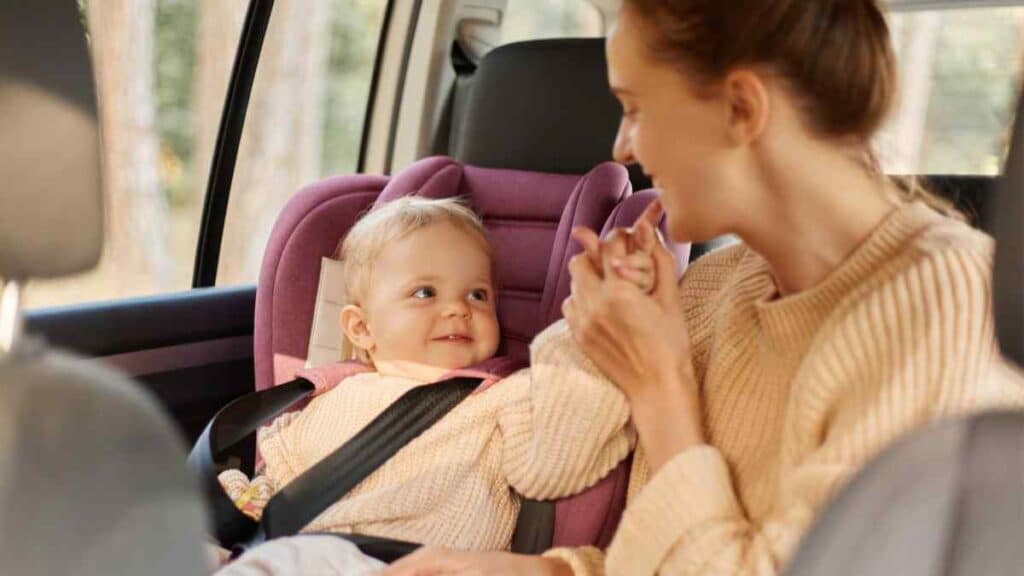
Conclusion
Embarking on travel adventures with your little one is a remarkable journey filled with cherished memories and heartwarming moments. Through the ups and downs of traveling with baby formula, you’ve learned that with a little preparation and a lot of love, you can keep your baby’s tiny tummy content and happy, no matter where you are in the world.
As you’ve journeyed through this article, you’ve joined a community of parents who share your joys, challenges, and the boundless love you have for your little one. Traveling with a baby is a team effort, and your commitment to providing the best for your baby’s well-being shines through.
So, as you venture forth into the world with your tiny traveler, armed with knowledge, determination, and an overflowing diaper bag, know that you’re creating memories that will be treasured for a lifetime. Your journey is a testament to the power of love and the resilience of parenthood, and with each step, you’re nurturing not just your baby’s tummy, but also their spirit of exploration and wonder. Happy travels, and may every adventure be a page in the beautiful story of your family’s life together.
Did this article help you? Please let us know! We’d love to hear your thoughts as we continue to develop our content.

